Upper Sacramento River Anadromous Fish Habitat Restoration Program
Table of Contents
Completed ProjectsMonitoring Plan and Data
Purpose
The purpose of this program is to increase and improve Chinook Salmon and steelhead spawning and rearing habitat by restoring and establishing additional side-channel habitat and spawning habitat along the Sacramento River in Tehama and Shasta Counties. The declines of naturally spawned salmonid stocks is due in part to the loss of spawning and rearing habitat through reduced gravel recruitment and altered flow patterns which historically created and maintained side channel habitats. Floodplain and side channel habitats serve as important refuge and rearing areas for juvenile salmon and these habitats likely contribute substantially to the productive capacity and life history diversity of Chinook Salmon.
This effort is funded in part by the Central Valley Project Improvement Act (CVPIA).
Partners
Upper Sacramento River Anadromous Fish Habitat Restoration Program is comprised of a network of partnerships. It brings together the expertise, community connections, and implementation capacity of local, state and federal agency staff, nonprofit organizations, water districts, university faculty and graduate students, tribes, and support of willing private landowners.
The US Bureau of Reclamation, NOAA Fisheries, US Fish and Wildlife Service, California Department of Fish and Wildlife, the California Department of Water Resources - Northern Region Office, Pacific States Marine Fisheries Commission, the Sacramento River Forum, California State University, Chico, Department of Biological Sciences, Geographical Information Center, the Resource Conservation District of Tehama County, River Partners, Yurok Tribe, and numerous water districts.
Completed Projects
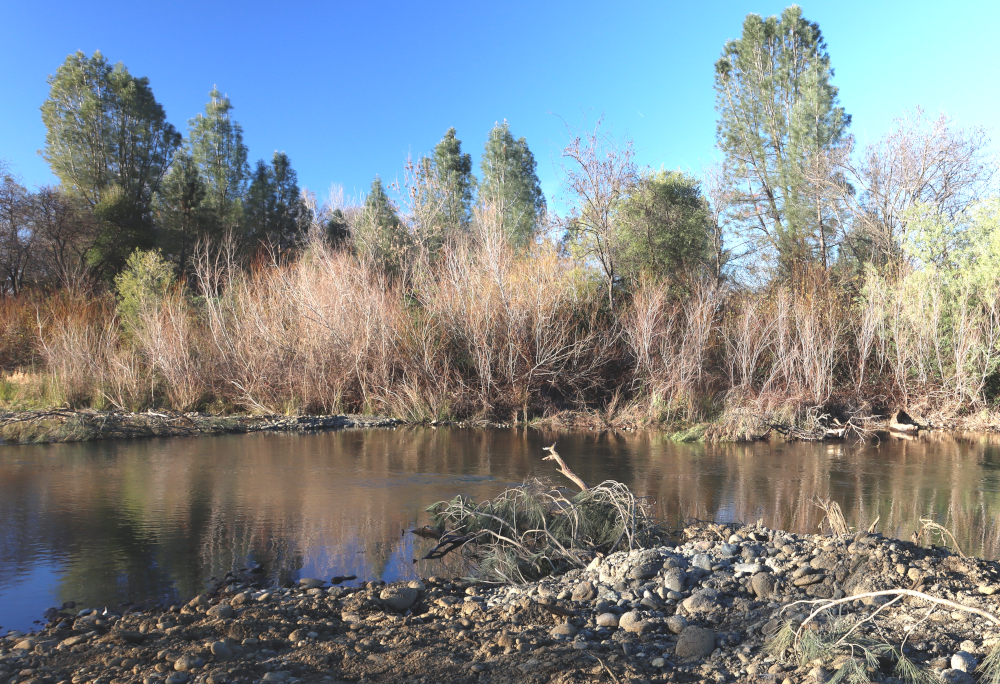
The Shea Island Side Channel project enhanced three perennially flowing side channel along the Sacramento River to provide rearing habitat for juvenile Chinook salmon. The project is located in Shasta County near Redding. Construction was completed in January 2024.
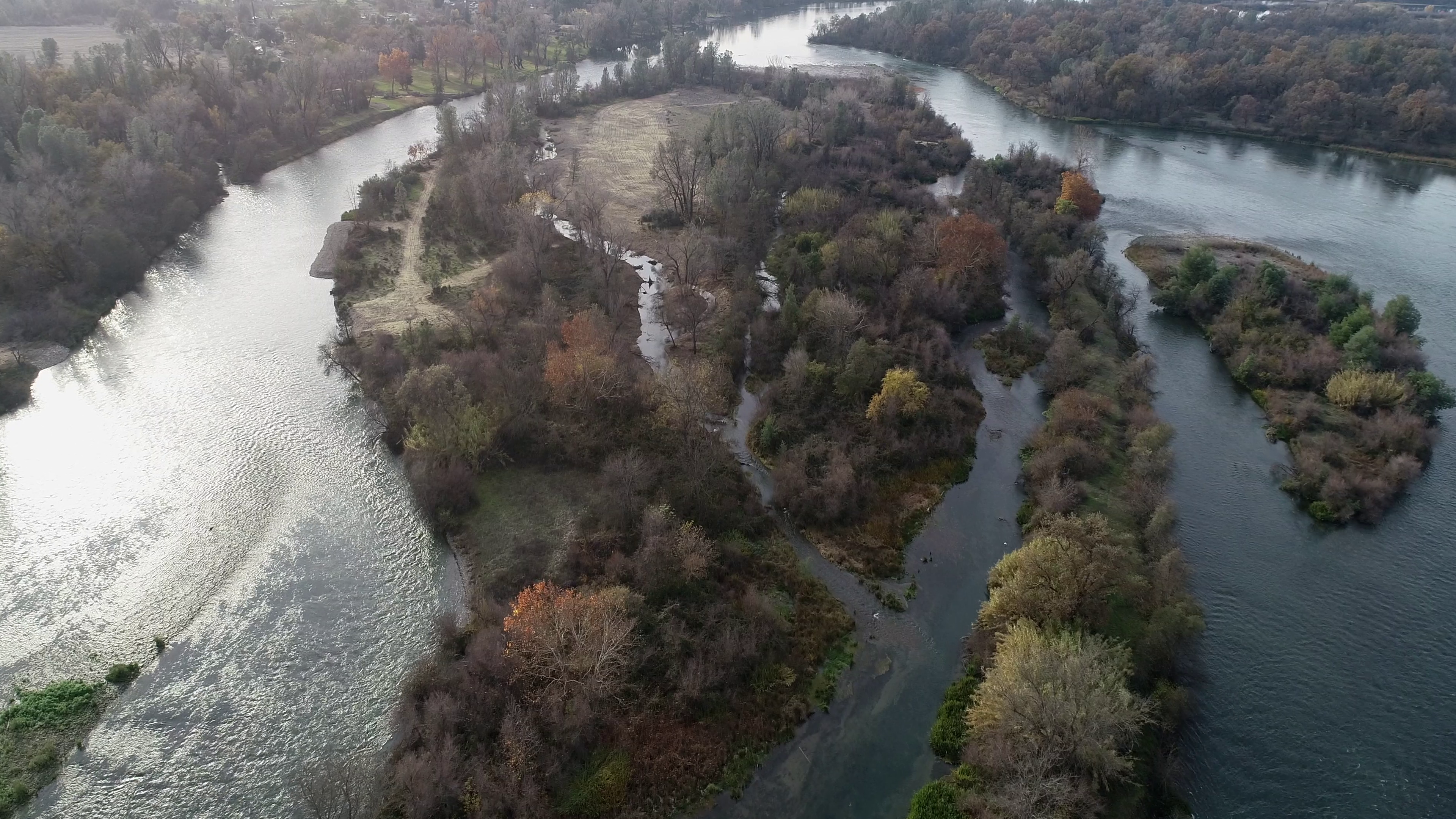
The Kapusta Island Side Channel project established a 0.24 mile long perennially flowing side channel along the Sacramento River to provide rearing habitat for juvenile Chinook salmon. The project is located in Shasta County between Anderson and Redding. The channel was completed in November 2023.
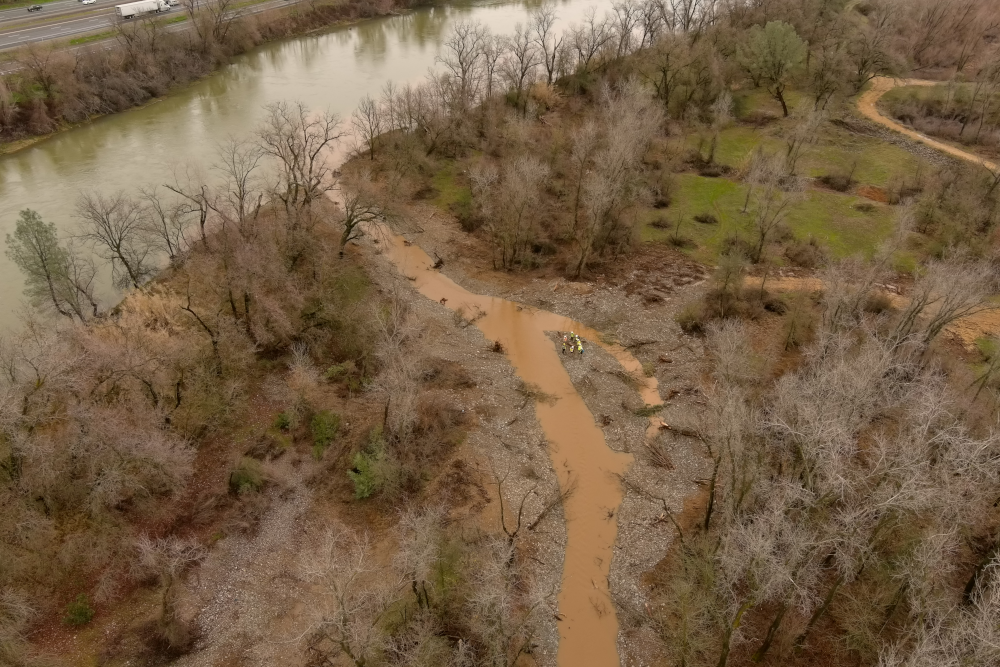
The Kapusta 1B Side Channel project established a 0.45 mile long perennially flowing side channel along the Sacramento River to provide rearing habitat for juvenile Chinook salmon. The project is located in Shasta County between Anderson and Redding. The channel was completed on January 6, 2023.
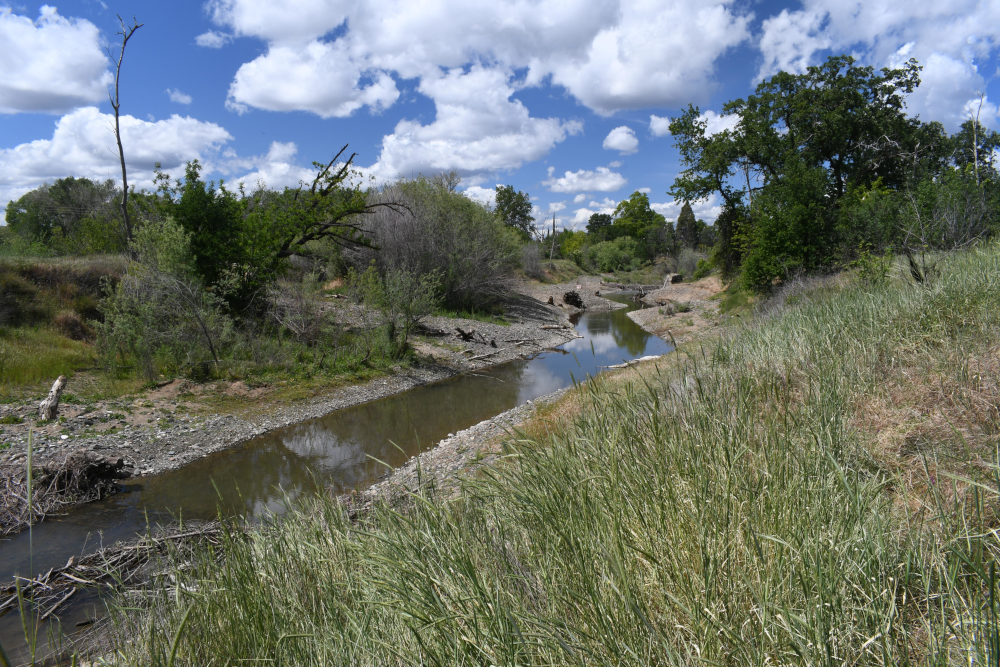
The East Sand Slough Side Channel project established a 1.8 mile perennially flowing side channel along the Sacramento River to provide rearing habitat for juvenile Chinook salmon. A secondary 0.6 mile channel was also constructed to convey periodic higher river flows to the main channel. The project is within the City of Red Bluff in Tehama County and was completed in March 2022.
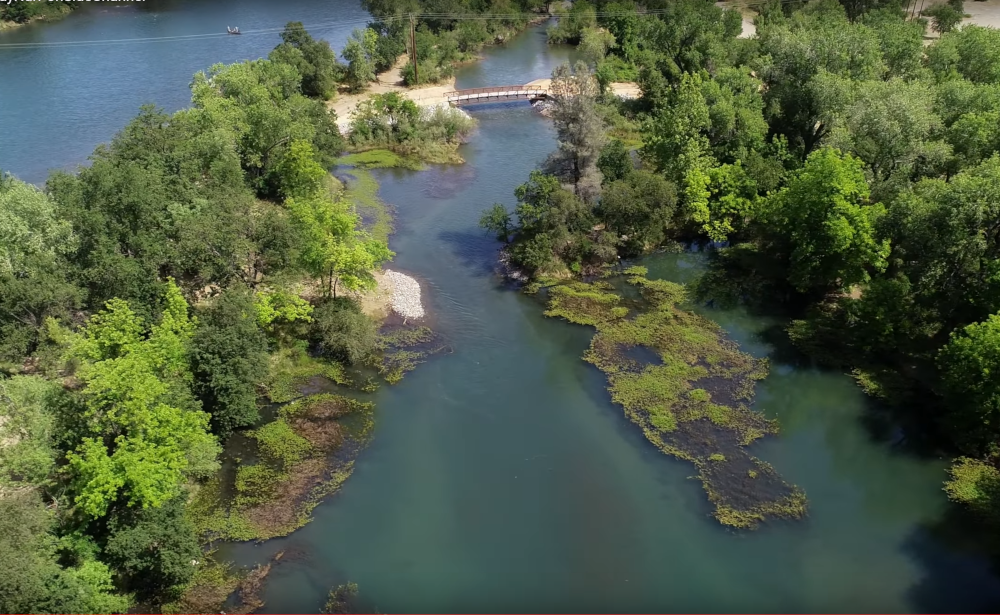
The Nur Pon Open Space Side Channel project established a 0.73 mile perennially flowing side channel along the Sacramento River to provide rearing habitat for juvenile Chinook salmon. About 2,200 CY of spawning gravel was placed in the river. The project is within the City of Redding's Nur Pon Open Space in Shasta County, and was completed in May 2021.
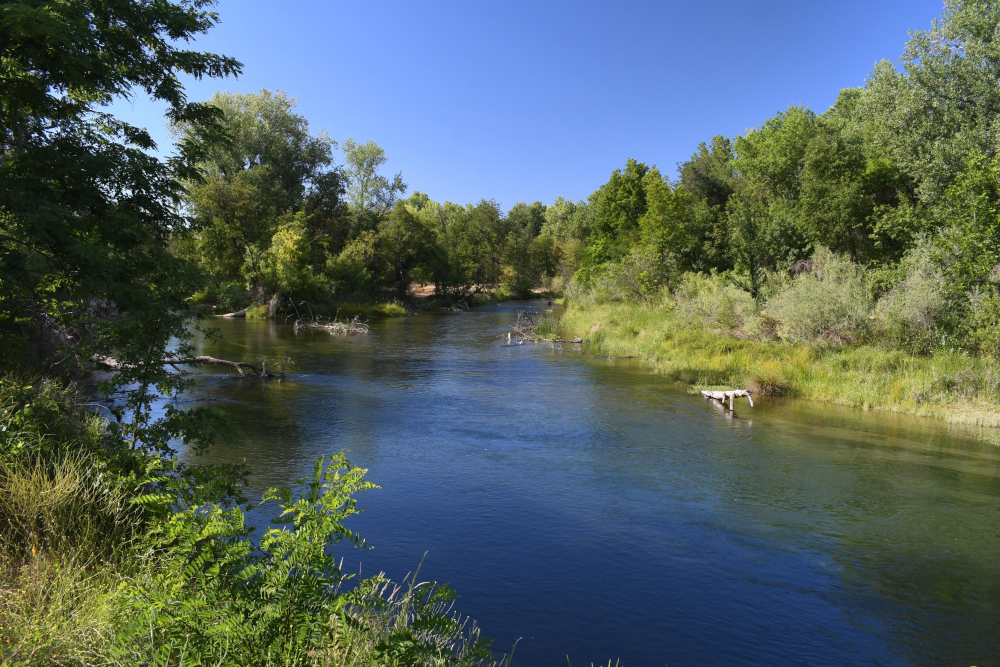
The Anderson River Park Side Channel project established 1.95 miles of perennially flowing side channels along the Sacramento River to provide rearing habitat for juvenile Chinook salmon. The project is within the City of Anderson in Shasta County, and was completed between 2019 and 2021.
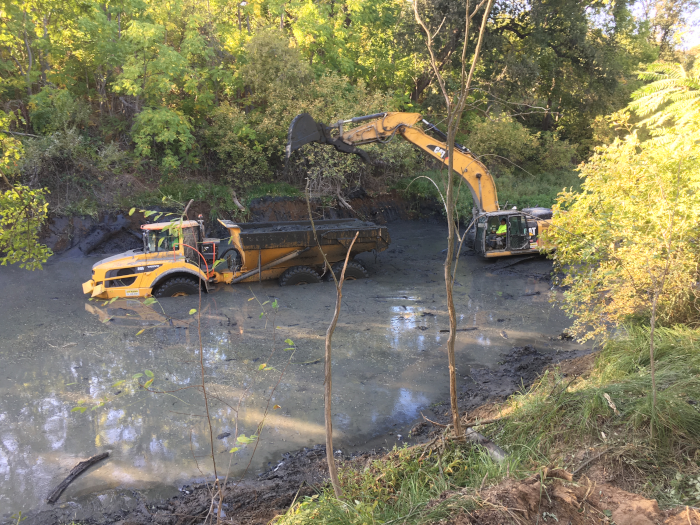
The Reading Island Side Channel project was completed in late November, 2019. It created 11,500 linear feet of suitable perennial habitat for salmon of all age classes (including endangered winter-run Chinook), steelhead and trout.
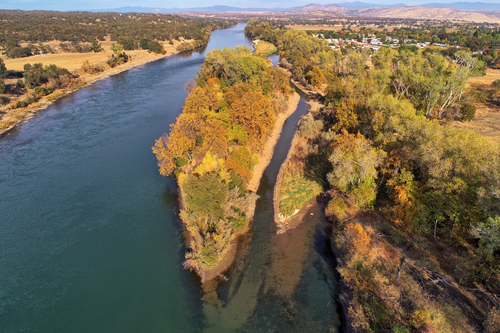
The Rio Vista Side Channel project was completed in early November, 2019. The project opened a 0.3 mile long side channel along the Sacramento River in Red Bluff, California. The channel is designed to provide provide suitable flows for juvenile Chinook salmon throughout the year. Woody debris and native plants were installed along the channel to provide habitat for salmon and other wildlife.
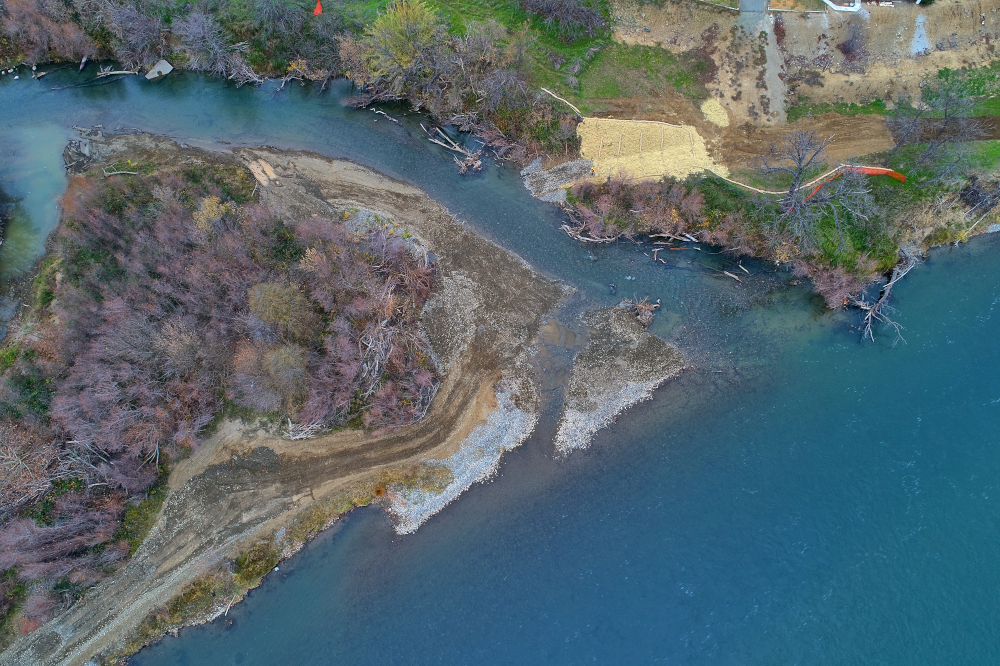
The Lake California Side Channel project was completed in December of 2017. The project modified an existing side channel to provide suitable flows for juvenile salmon throughout the year. Prior to construction the channel's flow was greatly reduced due during the winter by accumulated debris and gravel at the mouth of the channel.
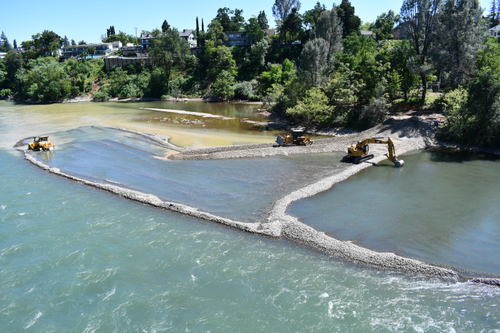
In 2019, the Market Street South Gravel Placement project added 11,900 tons of spawning gravel was added to the river at the Market Street Bridge in Redding, California in August 2019 to provide spawning habitat for Chinook salmon.
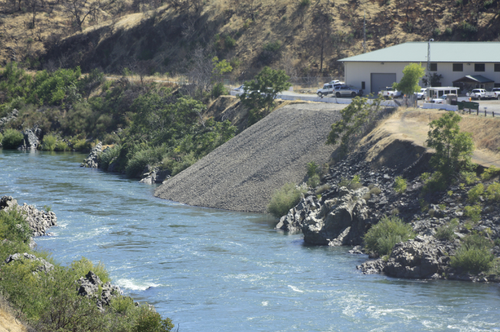
Over 20,000 tons of spawning gravel was added to the river just below Keswick Dam in September 2019 to provide spawning habitat for Chinook salmon. Gravel will continue to be added periodically to the river at this location.
Monitoring
- Monitoring Plan
- Photo Monitoring
- Monitoring Reports
- 2021-2022 Monitoring Report - (Appendices)
- 2020-2021 Monitoring Report - (Appendices)
- 2019-2020 Monitoring Report
- 2018-2019 Monitoring Report
- 2017-2018 Monitoring Report
- 2024 Monitoring
- 2023 Monitoring
- 2022 Monitoring
- 2021 Monitoring
- 2021 October
- 2021 September
- 2021 August
- 2021 July
- 2021 June
- 2021 May
- 2021 April
- 2021 March
- 2021 February
- 2021 January
- 2020 Monitoring
Links
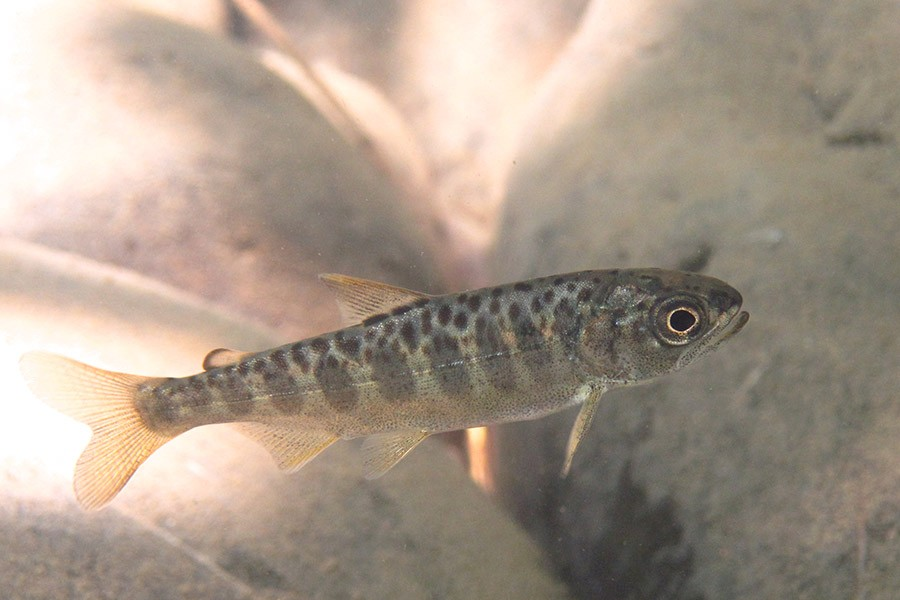
News
- KRCR News story on Rio Vista side channel construction (Posted: 11/3/2019)
- Red Bluff Daily News story on Lake California side channel (Posted: 12/20/17)
- Western Shasta RCD side channel project information
- Chico Statements - article on the project
- California Fisheries Blog - article on the project
- KRCR News story on the Cypress Avenue side channel project
This program aims to increase the quality and availability of off-channel juvenile rearing habitat for all runs of Chinook in the Sacramento River.
Program components include:
- Injecting spawning gravel into the Sacramento River to improve anadromous fish spawning habitat.
- Reconnecting side channels to the main river to increase shelter and rearing habitat for juvenile salmonids.
- Bank revegetation using native plants.
